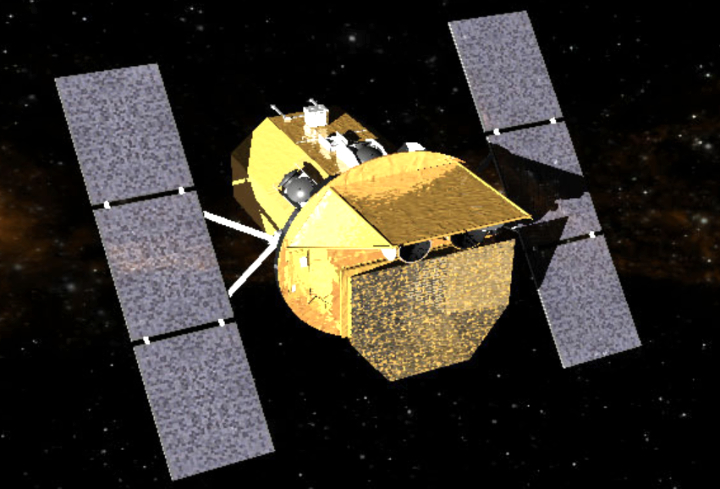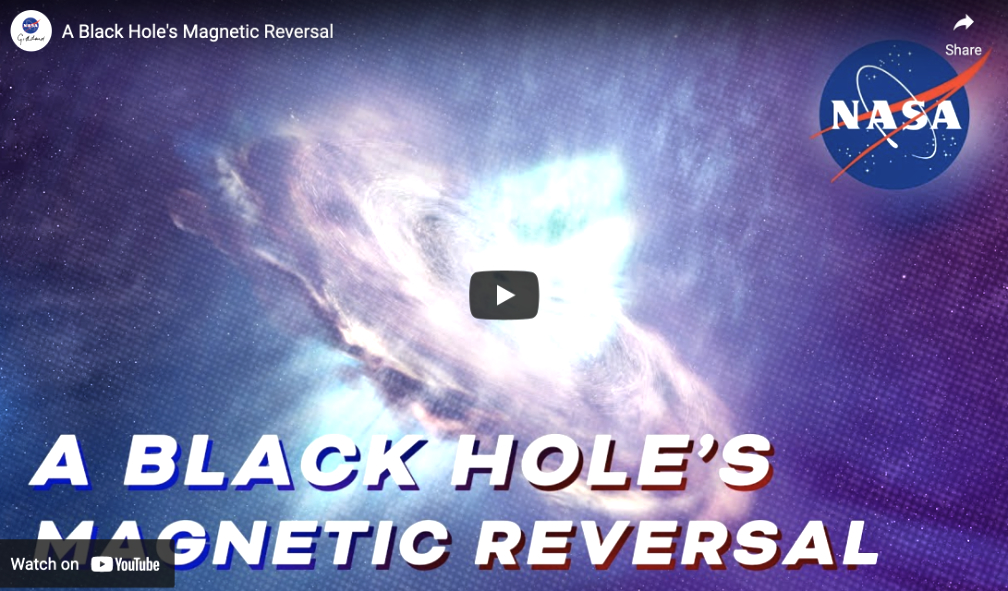
A rare and enigmatic outburst from a galaxy 236 million light-years away may have been sparked by a magnetic reversal, a spontaneous flip of the magnetic field surrounding its central black hole.
Explore the unusual eruption of 1ES 1927+654, a galaxy located 236 million light-years away in the constellation Draco. A sudden reversal of the magnetic field around its million-solar-mass black hole may have triggered the outburst. Credit: NASA’s Goddard Space Flight Center Download this video in HD formats from NASA’s Scientific Visualization Studio
“Rapid changes in visible and ultraviolet light have been seen in a few dozen galaxies similar to this one,” said Sibasish Laha, a research scientist at the University of Maryland, Baltimore County and NASA’s Goddard Space Flight Center in Greenbelt, Maryland. “But this event marks the first time we’ve seen X-rays dropping out completely while the other wavelengths brighten.”

A paper describing the findings, led by Laha, has been accepted for publication in The Astrophysical Journal.

The research team analyzed new and archival observations across the spectrum. NASA’s Neil Gehrels Swift Observatory and ESA’s (European Space Agency) XMM-Newton satellite provided UV and X-ray measurements.

Visible light observations came from Italy’s 3.6-meter Galileo National Telescope and the 10.4-meter Gran Telescopio Canarias, both located on the island of La Palma in the Canary Islands, Spain. Radio measurements were acquired from the Very Long Baseline Array, a network of 10 radio telescopes located across the United States; the Very Large Array in New Mexico; and the European VLBI Network.
In early March 2018, the All-Sky Automated Survey for Supernovae alerted astronomers that a galaxy called 1ES 1927+654 had brightened by nearly 100 times in visible light. A search for earlier detections by the NASA-funded Asteroid Terrestrial-impact Last Alert System showed that the eruption had begun months earlier, at the end of 2017.
When Swift first examined the galaxy in May of 2018, its UV emission was elevated by 12 times but steadily declining, indicating an earlier unobserved peak. Then, in June, the galaxy’s higher-energy X-ray emission disappeared.

“It was very exciting to delve into this galaxy’s strange explosive episode and try to understand the possible physical processes at work,” said José Acosta-Pulido, a co-author at the Canary Islands Institute of Astrophysics (IAC) on Tenerife.
Most big galaxies, including our own Milky Way, host a supermassive black hole weighing millions to billions of times the Sun’s mass. When matter falls toward one, it first collects into a vast, flattened structure called an accretion disk. As the material slowly swirls inward, it heats up and emits visible, UV, and lower-energy X-ray light. Near the black hole, a cloud of extremely hot particles – called the corona – produces higher-energy X-rays. The brightness of these emissions depends on how much material streams toward the black hole.
“An earlier interpretation of the eruption suggested that it was triggered by a star that passed so close to the black hole it was torn apart, disrupting the flow of gas,” said co-author Josefa Becerra González, also at the IAC. “We show that such an event would fade out more rapidly than this outburst.”
The unique disappearance of the X-ray emission provides astronomers with an important clue. They suspect the black hole’s magnetic field creates and sustains the corona, so any magnetic change could impact its X-ray properties.
“A magnetic reversal, where the north pole becomes south and vice versa, seems to best fit the observations,” said co-author Mitchell Begelman, a professor in the department of astrophysical and planetary sciences at the University of Colorado Boulder. He and his Boulder colleagues, post-doctoral researcher and co-author Nicolas Scepi and professor Jason Dexter, developed the magnetic model. “The field initially weakens at the outskirts of the accretion disk, leading to greater heating and brightening in visible and UV light,” he explained.
As the flip progresses, the field becomes so weak that it can no longer support the corona – the X-ray emission vanishes. The magnetic field then gradually strengthens in its new orientation. In October of 2018, about four months after they disappeared, the X-rays came back, indicating that the corona had been fully restored. By summer of 2021, the galaxy had completely returned to its pre-eruption state.
Magnetic reversals are likely to be common events in the cosmos. The geologic record shows that Earth’s field flips unpredictably, averaging a few reversals every million years in the recent past. The Sun, by contrast, undergoes a magnetic reversal as part of its normal cycle of activity, switching north and south poles roughly every 11 years.
Goddard manages the Swift mission in collaboration with Penn State, the Los Alamos National Laboratory in New Mexico, and Northrop Grumman Space Systems in Dulles, Virginia. Other partners include the University of Leicester and Mullard Space Science Laboratory in the United Kingdom, Brera Observatory in Italy, and the Italian Space Agency.
Authored by Francis Reddy, NASA’s Goddard Space Flight Center, Greenbelt, Maryland.

